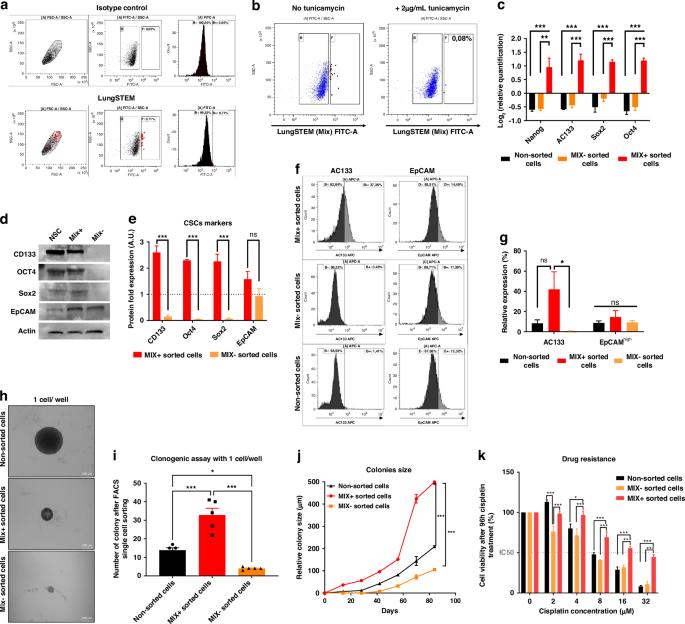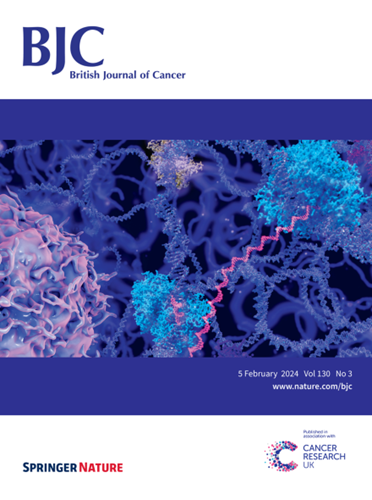早期非小细胞肺癌预后中癌症干细胞检测方法的比较
IF 6.4
1区 医学
Q1 ONCOLOGY
引用次数: 0
摘要
背景:尽管肺癌的诊断和治疗取得了进展,但由于抗药性机制和复发,治疗方法仍无法改善患者的管理。癌症干细胞(CSCs)直接导致肿瘤生长和治疗耐药性,因此临床检测它们是一项重大挑战。然而,目前缺乏特异性和额外的癌症干细胞标记物。因此,我们的目标是选择性地检测具有特定聚糖模式的癌干细胞,并评估癌干细胞负担,以预测NSCLC肿瘤的复发风险:方法:我们评估了凝集素 MIX 对肺部 CSCs 的检测和分类效果,并将其与 CD133 在体外进行了比较。然后,在221例NSCLC患者体内评估了其作为CSC生物标志物的推测作用及其临床意义:结果:与 CD133+ 细胞相比,我们发现 MIX+ 分选部分的 CSCs 有明显的富集,并证实了它的高致瘤能力。MIX对早期患者总生存期的预后价值得到了验证,这表明它具有检测与肿瘤侵袭性直接相关的干细胞的潜力:结论:与 CD133 相比,MIX 在检测和分类 CSCs 方面更具相关性。结论:与 CD133 相比,MIX 对 CSCs 的检测和分类更有意义。此外,它的预后价值还能帮助临床医生更好地对复发风险高的早期患者进行分类,从而做出有针对性的治疗决定。本文章由计算机程序翻译,如有差异,请以英文原文为准。

Comparison of methods for cancer stem cell detection in prognosis of early stages NSCLC
Despite advances in diagnosis and treatment in lung cancer, therapies still fail to improve patient management due to resistance mechanisms and relapses. As Cancer stem cells (CSCs) directly contribute to tumor growth and therapeutic resistance, their clinical detection represents a major challenge. However specific and additional CSC markers lack. Thus, our aim was to achieve selective detection of CSCs with specific glycan patterns and assess the CSCs burden to predict the risk of relapse in NSCLC tumors. The lung CSCs detection and sorting with a lectin MIX were assessed and compared to CD133 in vitro. Then, its putative role as CSC biomarker was evaluated in vivo and its clinical significance on 221 NSCLC patients. We showed a significant CSCs enrichment in the MIX+ sorted fraction compared to CD133+ cells and confirmed its high tumorigenic capacity. The MIX prognostic value on the overall survival from early stages patients was validated suggesting its potential for detecting CSCs directly linked to tumor aggressiveness. The MIX could be more relevant for detecting and sorting CSCs than CD133. Moreover, its prognosis value could enable clinicians to better classify early-stage patients at high risk of relapse in order to tailor therapeutic decisions.
求助全文
通过发布文献求助,成功后即可免费获取论文全文。
去求助
来源期刊

British Journal of Cancer
医学-肿瘤学
CiteScore
15.10
自引率
1.10%
发文量
383
审稿时长
6 months
期刊介绍:
The British Journal of Cancer is one of the most-cited general cancer journals, publishing significant advances in translational and clinical cancer research.It also publishes high-quality reviews and thought-provoking comment on all aspects of cancer prevention,diagnosis and treatment.
 求助内容:
求助内容: 应助结果提醒方式:
应助结果提醒方式:


